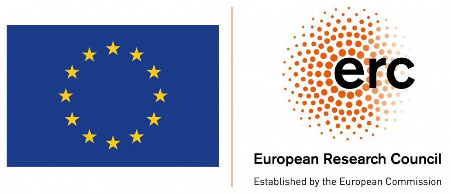
The PhD student Yufei Wang will defend his thesis on 11th July 2022 at 11h in the ETSECCPB - UPC CAMPUS NORD. Víctor Vilarrasa is a Thesis Committee member.
Author: Wang, Yufei
Programme: Doctoral Degree in Geotechnical Engineering
Title: Numerical Modeling of Geological Carbon Sequestration: Enhanced Dissolution in Randomly Heterogeneous Media
Advisor: Daniel Fernández García
Committee: Jesús Carrera Ramírez, Francisco Javier Sánchez Vila, Víctor Vilarrasa Riaño
Reading time: 11/07/2022 at 11:00h
Reading place: Aula 002 building C1. ETSECCPB - UPC CAMPUS NORD - C. Jordi Girona, 1-3 08034 Barcelona
Abstract:
Geological Carbon Sequestration (GCS) plays a major role in mitigating the global warming due to the increasing concentration of CO2 in atmosphere. It is important to understand the GCS process to analyze and predict its influence on the CO2 reservoir site. This work firstly offers three finite difference programs for simulating the GCS process, secondly applies the program to perform quantitative analysis of the GCS, and finally gives several remarks related to the GCS. Firstly, we describe the three finite difference programs, which, to different extents, take into account the role of chemical reaction in the GCS process. The first program is a reactive two-phase flow model that only considers the interplay between brine and gas phases, which can be solved with explicit method. The second program is a simplified reactive three-phase flow model that also considers the heterogeneous reaction between mineral rock and the aqueous species, but all the chemical reactions are treated as equilibrium reactions and expressed with empirical formulas, to avoid performing grid-by-grid calculation of chemical reaction at each time step. The third program is a full reactive three-phase flow model that accounts for partial equilibrium reaction system (i.e., both equilibrium and kinetic reactions are included) as well as the pure equilibrium reaction system. In this third program, the partial equilibrium chemical system is solved with MAL, and chemical reactions and mass transport are alternately solved with Newton-Raphson method. All these programs have been approved through non-ideal benchmark test that only considers the transport issue. Secondly, the first program is employed to perform two qualitative analysis on the dissolution trapping. The first quantitative analysis focuses on the enhanced dissolution efficiency of overlying gaseous CO2 into underlying brine owing to gravity-driven convection (GDC) in the brine phase. The injected light CO2 will override the brine. Studies have shown that the dissolution is not only driven by molecular diffusion, but also enhanced by the GDC in the brine, because the dissolution of CO2 can increase the density of the brine in the upper portion. In literature, the GDC in homogeneous media has been well studied and researchers are attempting to investigate the GDC in realistic heterogeneous media. It is yet to find an efficient formula to predict the dissolution rate in heterogeneous media with anisotropic permeability distribution. This work conducts a large number of numerical simulations in various heterogeneous fields, analyzes the simulation results, and proposes two formulas that efficiently predict the dissolution rate based on geological and fluid parameters. The second quantitative analysis focuses on the enhanced dissolution trapping due to the layered permeability structure during the injection period. Results show that when buoyant forces are important, vertical segregation controls the overall behavior of CO2, diminishing the influence of small-scale heterogeneity on dissolution. However, when buoyant forces are relatively small compared to the degree of heterogeneity, CO2 migrates preferentially through high permeability layers and dissolution efficiency increases with heterogeneity due to the stretching of the CO2 plume that enhances mixing. As a result, in this situation, the upscaling of permeability leads to an underestimation of the dissolution efficiency. Additionally, we give in the appendix a parallel study on how to enhance NAPL removal and mixing with engineering chaotic advection.

